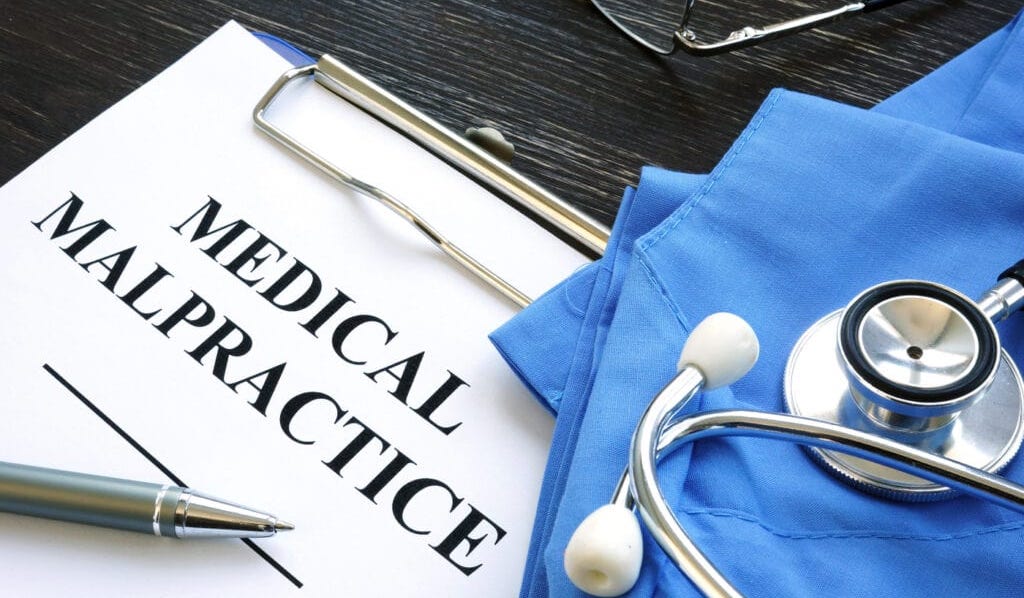Maryland Medical Malpractice Facts
Medical mistakes are unacceptable. When you have an injury due to your healthcare provider’s negligent actions or errors, you can hold them accountable and recover the compensation you deserve. However, the claims process is often complex. With that in mind, we have gone over some of the most essential medical malpractice facts you should be aware of as you go after the benefits and compensation that are rightfully yours.
When you need a legal advocate to help guide you through the claims process, look no further than our team of respected Maryland medical malpractice attorneys at Parker, Pallett, Slezak & Russell. You can reach out by phone at (443) LAWYERS or through our online contact form to schedule your free consultation as soon as today.

Maryland Medical Malpractice Laws
Healthcare provider mistakes are far more common than you might realize. Thankfully, under Maryland law, when a medical professional’s error or negligence causes their patients severe injury, illness, or damages, they can be held accountable to the fullest extent of the law through various personal injury claims.
However, for your civil case to be successful, our Maryland car accident lawyers must show that your provider made a decision or failed to make a decision that another provider of similar expertise, training, knowledge, and education would not have made.
What are the 4 Ds of Medical Malpractice?
When pursuing your case under Maryland medical malpractice law, our personal injury attorneys will review your keys to determine whether the elements of negligence have been met. In medical malpractice cases, we referred to these as the “4 Ds”:
- Duty of care – Duty refers to your healthcare provider’s obligation to you. A healthcare provider will generally only owe you a duty of care if they are responsible for treating, diagnosing, or providing follow-up care.
- Deviation from the standard of care – The standard of care refers to the quality and type of care patients receive from their providers. Any deviation from this is considered medical negligence. If medical professionals do not provide patients with the same treatment, diagnosis, and follow-up care that other similarly qualified healthcare providers would, the standard of care has been breached.
- Damages – Damages describe how your life has been affected by the injury or illness you endured due to your healthcare provider’s negligent actions.
- Direct cause – Here, your medical malpractice attorney in Maryland will need to provide evidence demonstrating how your healthcare provider’s negligent actions were the direct cause of your worsening condition, injuries, or damages.
Common Types of Medical Malpractice
Medical malpractice can come in multiple forms. You may be surprised to learn that certain situations can warrant a medical malpractice lawsuit or insurance claim under Maryland’s medical malpractice statute. Some of the most common types of medical negligence we deal with include:
- Misdiagnosis
- Failure to treat
- Failure to provide follow-up care
- Birth injuries
- Prescription medication errors
- Anesthesia mistakes
- Surgical errors
- Laboratory mistakes
- Injuries caused by defective medical devices
These are only a few examples of categories of medical malpractice. If you have suffered a debilitating injury or illness due to a healthcare mistake or error, do not hesitate to contact our team to discuss your legal options going forward.
Who Can Be Sued In a Medical Malpractice Case?
Nearly any type of healthcare provider has the potential to be sued or have a medical malpractice insurance claim brought against them. Some of the top healthcare providers to be held accountable for medical mistakes include:
- Hospitals
- Physicians
- Doctor’s offices
- Pharmacists
- Pharmacy technicians
- Dentists
- Nurses
- Anesthesiologists
- Surgeons
- Obstetricians
- Midwives
- Pediatricians
- Chiropractors
The Deadline for Filing a Medical Malpractice Claim in Maryland
Every state has a maximum amount of time to file your claim for damages. Maryland is no different. According to the Maryland statute of limitations for medical malpractice lawsuits, victims have a maximum of five years from the injury date. However, in most cases, the deadline is three years from when you discovered your injury.
However, if the injury victim is a minor child, the statute of limitations is slightly different. Usually, the deadline will not begin until the child reaches eleven. However, in a surgical accident, such as a foreign object being left in a body cavity, the minor’s legal guardian or parent may have until the minor reaches the age of 16 before the statute of limitations passes.
With the statute of limitations often being unclear, getting the legal guidance of our respected medical malpractice attorneys may be in your best interests. Remember, if your case is not filed before time runs out, you will lose your opportunity to have your case heard at trial.
The Value Of a Medical Malpractice Claim
You have the right to be fully repaid for your losses if someone else is responsible for causing your injuries. This does not only include your out-of-pocket or financial expenses either. You have the right to be repaid for every way your life has been impacted by the injuries you sustained.
With that in mind, here are some of the most common types of economic and non-economic damages paid out in a medical malpractice claim:
- Cost of mental health counseling, around-the-clock care, and physical or occupational therapy
- Cost of prescription medications, your hospital stay, co-pays, and home accommodations
- The costs of any future medical treatment
- Loss of familial support, an intimate spousal relationship, and love and support
- Physical pain and suffering
- Psychological distress, mental anguish, and emotional trauma
- Diminished quality of life
- Loss of future potential earnings and employee benefits
- Loss of income and earning capacity
You could also be awarded punitive damages. However, this is rare. The Maryland court typically only awards punitive damages if they determine the defendant’s conduct is grossly negligent or malicious.
What You Need to Know About Maryland’s Medical Malpractice Cap
Maryland does not cap the amount of economic damages that can be paid out in medical malpractice claims. However, there is a cap on the amount you can recover in non-economic damages. This reimbursement for the non-financial ways your life has been affected could be limited at trial.
As of 2023, the maximum amount you can recover for non-economic damages in Maryland is $875,000. This number will increase annually by $15,000 to account for inflation. However, if you are dealing with a wrongful death case involving medical malpractice, the maximum amount the beneficiaries can receive is 125% of the annual cap.

Maryland Has Mandatory Arbitration Laws for Medical Malpractice Claims
You must attend mandatory arbitration in a medical malpractice claim unless you waive your right and decide to proceed to trial. You can rely on your medical malpractice attorney to review the circumstances of your case to determine whether having your case heard in arbitration is appropriate.
Get Help From a Medical Malpractice Lawyer in Maryland Today
These are just a few of the most critical Maryland medical malpractice laws you should know as you go after the compensation you need to cover your costs and get through these difficult times.
If you have additional questions regarding your medical malpractice claims that we did not describe above, do not hesitate to contact our team so we can discuss the details of your case further. You can reach us via our convenient contact form or phone at (443) LAWYERS to schedule your free, no-obligation consultation with a medical malpractice attorney at Parker, Pallett, Slezak & Russell as soon as today.







